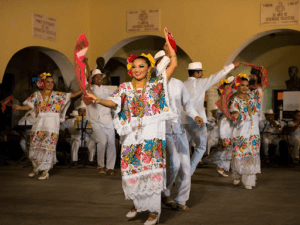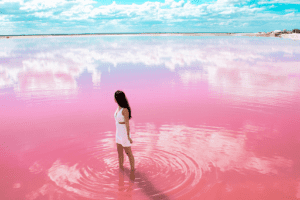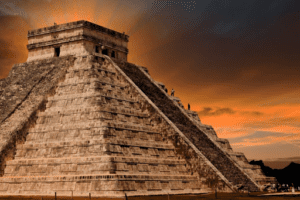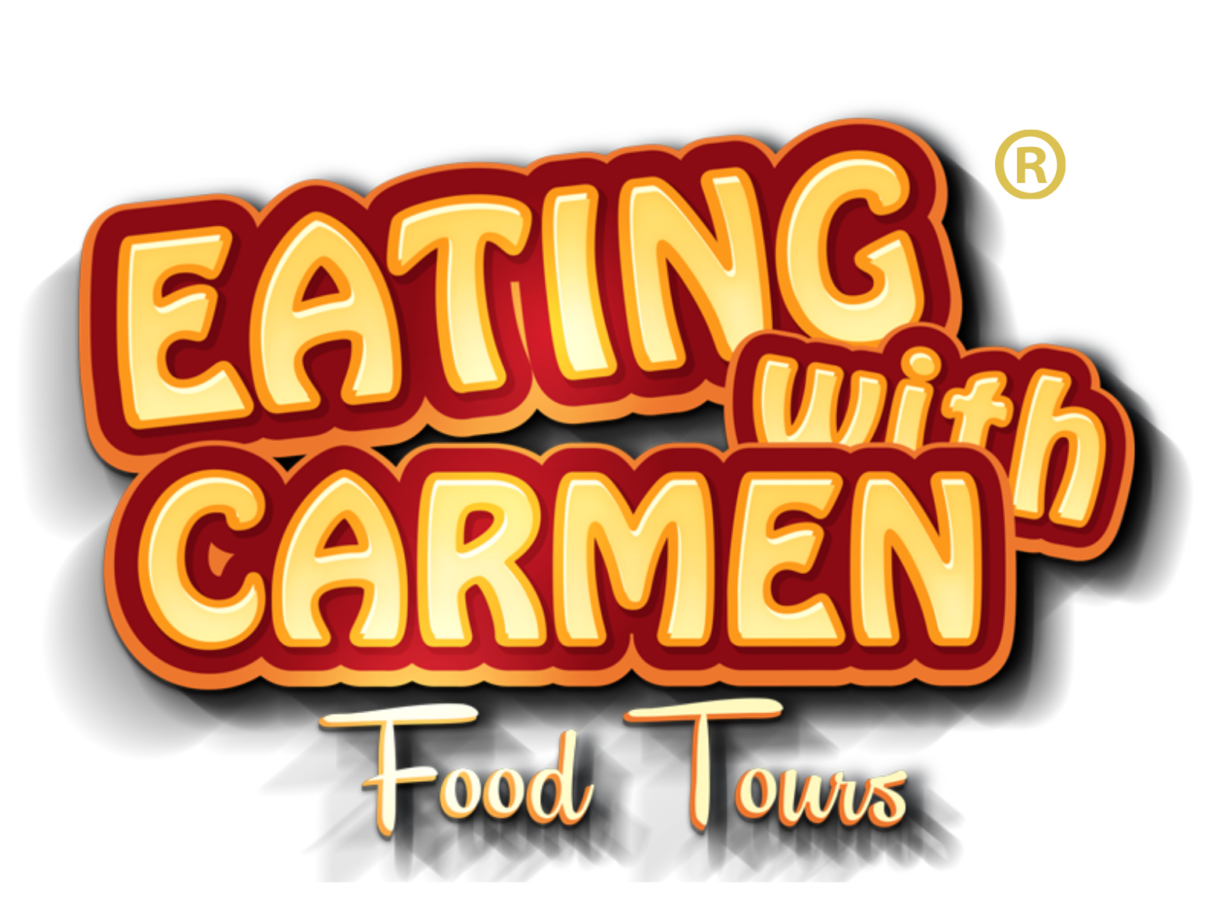Whenever I travel I find it crucial to do some research about my destination, and I think if you do the same when visiting Mérida and learn a little bit more about the rise of this modern yet traditional city, you will likely want to get more involved. Perhaps instead of spending only a few days, you might end up planning on a longer stay. One thing is for sure and it’s that Mérida will surprise you with its architecture, gastronomy, lots of cultural activities, and the great kindness of the local citizens.
ANCIENT MERIDA
Mérida was built over an abandoned Pre-Hispanic settlement, originally founded by Spanish conqueror Don Francisco de Montejo in 1542. A refuge used by Spaniards to hide from the threatening Mayans. It is believed that T’Hó, was the name given by former indigenous settlers.
Mérida was the heart of the Mayan civilization, located in the northwest part of the state of Yucatán, famously called “The White City”, on one hand, because the legend that tells Spaniards were so impressed and enchanted by its temples and shrines that in the sunlight they reminded them of the white lime buildings found in the Spanish city of Mérida, and that’s why they decided to baptize this new territory with the same name. On the other, it is because it describes how neat and shiny the city always looks.
In the 19th century, Mérida went through an economic boom derived from the exploitation of henequen, “The green gold” (often called sisal outside Mexico) a local plant from the agave family, recognized for its multiple uses, such as the manufacture of ropes, threads, bio detergents, even as an emulsifier for fuels. The pulp from shredding can serve as cattle feed, compost, and waxes for industrial use.
HACIENDAS
Many former corn farms from the Yucatan Peninsula, especially those in the Mérida area, were transformed into henequen haciendas.
Haciendas required large staffing for the cultivation of “The green gold” as well as the development and maintenance of industrial processes. Workers were provided with housing and the amenities of a community. The foreman usually had his own home, and the typical hacienda would have storage buildings, a machine house, a pump house, a school, a small hospital, a store, a chapel, the stables, and a jail.
When the market for henequen collapsed, most of these grand houses fell into ruin. Nowadays several have been restored and transformed into hotels and restaurants. You can visit them as a day trip to enjoy a traditional lunch, a spa treatment, or to explore the cenotes and pyramids within. While others are now museums detailing the history of the henequen golden years.
Here are some of the best-rated Haciendas, where luxury meets tradition.

TRADITIONAL YUCATECAN CUISINE
Many factors make Yucatecan gastronomy stand out from the rest of Mexico. Most dishes of the region have their origin in the mixture of the Mayan culture and the Spanish culinary tradition, derived from the conquest and the 3 centuries that the colonial period lasted, other elements are decisive in the flavor of the dishes, such as those brought by European and Arabic immigrants, who have also left their mark on the activity of daily Yucatecan life.
Merida on Sundays, the best day to find and delight yourself with every antojito listed on our 6 Antojitos Yucatecos You Can’t Miss When You Visit The Yucatan Peninsula guide.
– Head to Plaza Grande at downtown, to enjoy a lovely evening, listening to Yucatecan troubadours on one of the many restaurant terraces or street stalls around.
-Mercado Lucas de Galvez, among the largest and busiest markets in the city, is a cheap place to eat, where you’ll find delicious seafood cocktails, local handicrafts, clothing, and more food! Most of the hard-working people at the market speak Spanish only, so if you are not sure what to order, I highly recommend booking the “Merida Local Experience Food Tour” at Eating With Carmen Food Tours, where our team will guide you through your ultimate Yucatecan culinary experience.

-Walk to the southern end of Paseo Montejo to 47th Street, famously known as the Restaurant Row, you’ll find some of the best restaurants in Merida, and the trendiest cafes.
My favorite Cafeteria Impala, an indoor/outdoor old school diner, that will take you back in time, while serving delicious food since 1958.
EXPLORE THE CULTURE
The Yucatan peninsula is without a doubt full of history, tradition, and culture. Merida exploits each of these elements, both in its architecture and in the variety and cultural activities, free museums, and exhibitions, all year round!
Here are some of the cultural activities and places of cultural interest that you should not miss.
MUSEUMS
Mayan World Museum of Mérida (Gran Museo del Mundo Maya)
Palacio Canton
Contemporary Museum Of Art MACAY (Museo de Arte Contemporáneo Ateneo de Yucatán)
Montejo House Museum
Yucatecan Gastronomy Museum MUGY
CULTURAL ACTIVITIES

On Mondays, you can enjoy the “Noche de Vaquería” event, which are regional dances presented by the Mérida City Council dance company. Dances begin at 9:00 P.M.
Video-mapping at downtown: It is shown on Wednesday at Casa de Montejo and on Saturdays at Mérida Cathedral at 8:00 P.M and 9:00 P.M.
On Thursdays, close to Mérida Cathedral, you can enjoy trova music. The event is called Serenatas de Santa Lucía, the same name as the park where the event takes place.
San Idelfonso Cathedral will be a mandatory stop to admire the majesty and beauty of this site. It is considered one of the most beautiful and oldest cathedrals in Mexico.

To discover what a Mexican cemetery is like visit the Paneton Florido (Flowered Cemetery) Full of color and beauty, see multiple architectural styles, including neo-gothic, Greek, neo-Maya, and art deco. It’s not unusual to do cemetery tours in Merida or elsewhere in Mexico, especially around Día de Muertos.
On Fridays next to Plaza Grande at 830 P.M watch a Pok Ta Pok Mayan Ballgame. The game was played by Mayans in ancient times. The hoops were way up on the walls and they had to get a ball, which was made of rubber, through them… using only their hips! Losers were sacrificed at the top of the pyramid. These days, they just play for fun, don’t worry.
CANTINA HOPPING

In Mérida, traditional cantinas are a big part of the culture and among the most unique things to do. Perhaps it will become one of your favorite night activities.
If you haven’t had enough of Yucatecan gastronomy yet, at cantinas you can get to try main traditional dishes, such as brazo de reina or queso relleno, but the most outstanding and delicious part of cantinas is that as long as you keep ordering beers or cocktails, the food will never stop arriving at your table, even if you don’t order it, that’s how you party here.
For each drink you get to try from 5 to 10 different ”little snacks”, so get ready to mingle with locals, listen to local bands and dance the night away!
A personal favorite, Cantina La Negrita, great local ambiance, great service, great food and drinks, great everything!
Among local and the expat community, these are some of the best cantinas around town:
Pulquerida
El Cardenal
El Dzalbay
Mezcaleria La Fundacion
Bar Eladios
MÉRIDA AS YOUR HUB FOR YOUR YUCATECAN VACATION
The location of the city makes it a perfect central hub to plan a bigger vacation where you might want to try some of these sites:
Puerto Progreso Beach:
The town of Progreso, is located about 23 miles (36: km), or 45 minutes by car, from downtown Merida. The closest beach to Merida is Puerto Progreso which is very important thanks to national and international maritime trade. It is great to walk along the Malecon, try new seafood restaurants, take a swim, sunbathe and just relax.
Celestun:
Beautiful, quiet beach with seafood restaurants right on the sand, though it’s better known for the Ria Celestun Biosphere Reserve. Here, you’ll see the large flock of Celestun flamingos and some other local and exotic birds. Playa Celestun is also westward-facing, which means that you can watch the sunset over the water here, not possible on most other Yucatan beaches.
Las Coloradas Beach:
Though it is not suitable for swimming, because of its high salt concentration that could even be harmful to your skin, it is a must-visit destination. The landscape will take your breath away. The pink water at Las Coloradas is proof of how beautiful nature is. The amount of salt, the intensity of the sun, and the Dunaliella salina algae are responsible for this natural wonder.
Located in the municipality of Rio Lagartos, about two and a half hours from Merida. Between 12:00 P.M. and 15:00 P.M. is when it looks the pinkest.

Cenotes Hacienda Mucuyché:
Located in the municipality of Abalá, Hacienda Mucuyché has two cenotes: Carlota and Azul Maya. These are connected by a channel which you can cross either by swimming or on foot.
This is one of the most beautiful places you can visit during your stay in Merida, as you can also enjoy a tour of the restored hacienda.
CHICHEN ITZA

The legendary Mayan city, World Heritage Site declared by UNESCO since 1988 and one of the 7 Wonders of the World since 2007, cultural and political center of the old civilization.
An hour and a half from Mérida, the mighty pyramid-shaped Temple of Kukulcán, also known as El Castillo, at Chichén Itzá is the most recognizable of all Mayan structures, thanks to its impressive size, extraordinary details, and painstaking restoration. This sophisticated spiritual and urban center also shows a Mayan ball court, as well as a series of plazas and an observatory. During spring and fall equinoxes, the northwest corner of El Castillo casts a shadow that mimics a snake slithering down the pyramid.
Not only for the city of Chichén Itzá but for the entire Mayan area, the Sacred Cenote, the heart of religious activities was a temple for worshiping the god of rain, Chaac.
Definitely a top-rated activity on the Yucatan Peninsula where tours are offered for tourists, in different languages, during the day so you can get the whole story behind this magical place.
MAGICAL NEARBY CITIES AND SMALL TOWNS
IZAMAL
Colonial city founded in the 16th century, on what were the vestiges of an ancient city of the Mayan civilization. Known as the “City of Hills”, because in ancient times there were many more pyramids. Izamal, a place where time stands still, surrounded by golden-yellow walls on every building on every street. “The Yellow City”, Magical Town, one of the most important cities for the Mayans, and considered one of the oldest.
Located in the southeast of the country, and about 72 kilometers (115 miles) from Mérida, you just have to take the Mérida-Cancun highway and turn off at km 48 towards Izamal, the trip takes approximately 45 minutes by car. You can also take a bus to the terminal located on Calle 67.
Credit: https://mexicorutamagica.mx
VALLADOLID
An ancestral and colonial paradise, this town still emanates the ancient magic of the Mayan inhabitants. Afternoons are made for wandering around its barrios full of colors, with its enormous houses that seem to talk about important moments in the history of the country, like the War of the Castes, The Colony, and The Mexican Revolution.
Valladolid is referred to as the Pearl of the Mayan Orient since it is located in the middle of the most important touristic cities in the peninsula: Merida and Cancún. That’s why this Pueblo Mágico is a must.
There are plenty of things to do in Valladolid. Try starting your visit by walking through some famous barrios such as La Candelaria, San Juan, Santa Ana y Sisal. As you walk, you will discover temples and ex-convents like Santa Lucía and San Bernardino, architectural witnesses of the Franciscan Order. You can also find traditional Mayan restaurants. Try the famous sopa de lima and the Valladolid sausage. In the afternoon you can find plenty of street stalls with traditional delicacies.
TOO MUCH FOR A BLOG POST!
Dear foodies and adventurers, I gotta say, I prepared a long list of sites and activities for my vacation but it would make this blog post too long to read, so I’m just showing you the path so you can explore further, hopefully, you are now convinced to book your next visit to Merida, Yucatan, without a doubt, a place you will want to return to again and again or perhaps, start a new life at.
We invite you to soak up on our culture and gain a few kilos, delighting all your senses with the tradition this place offers.
See you soon!!
-Abbey.








